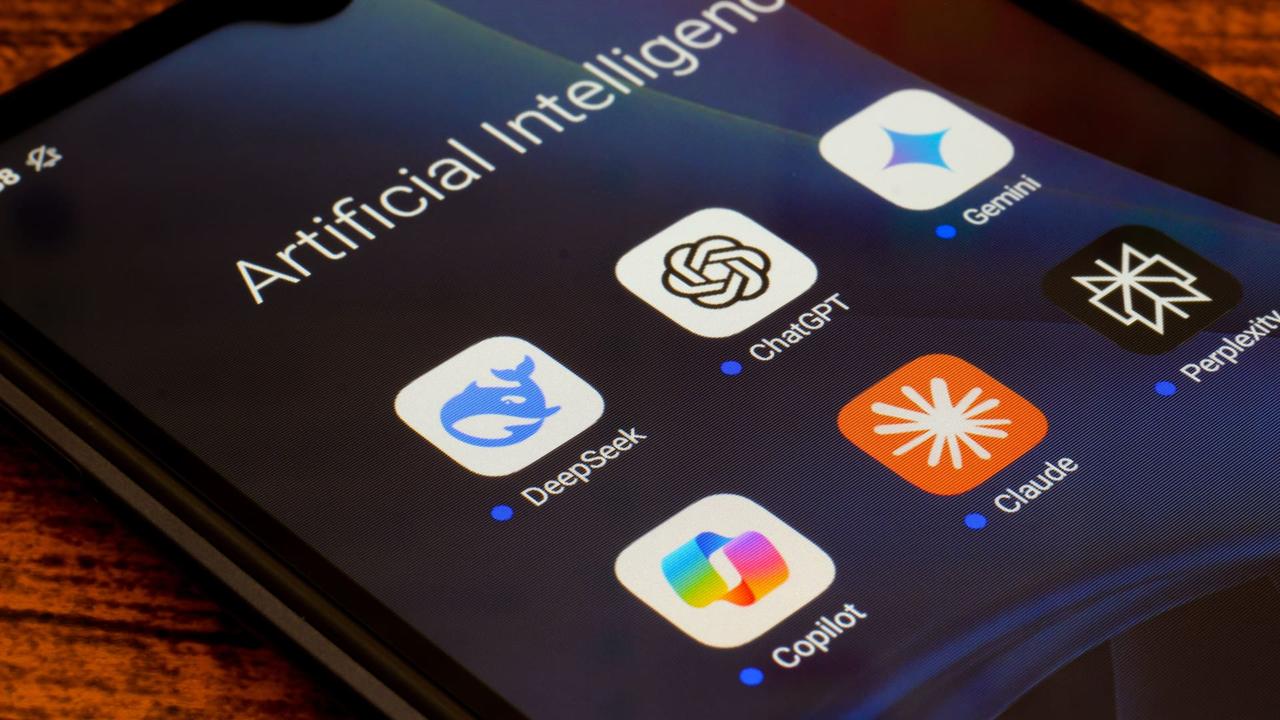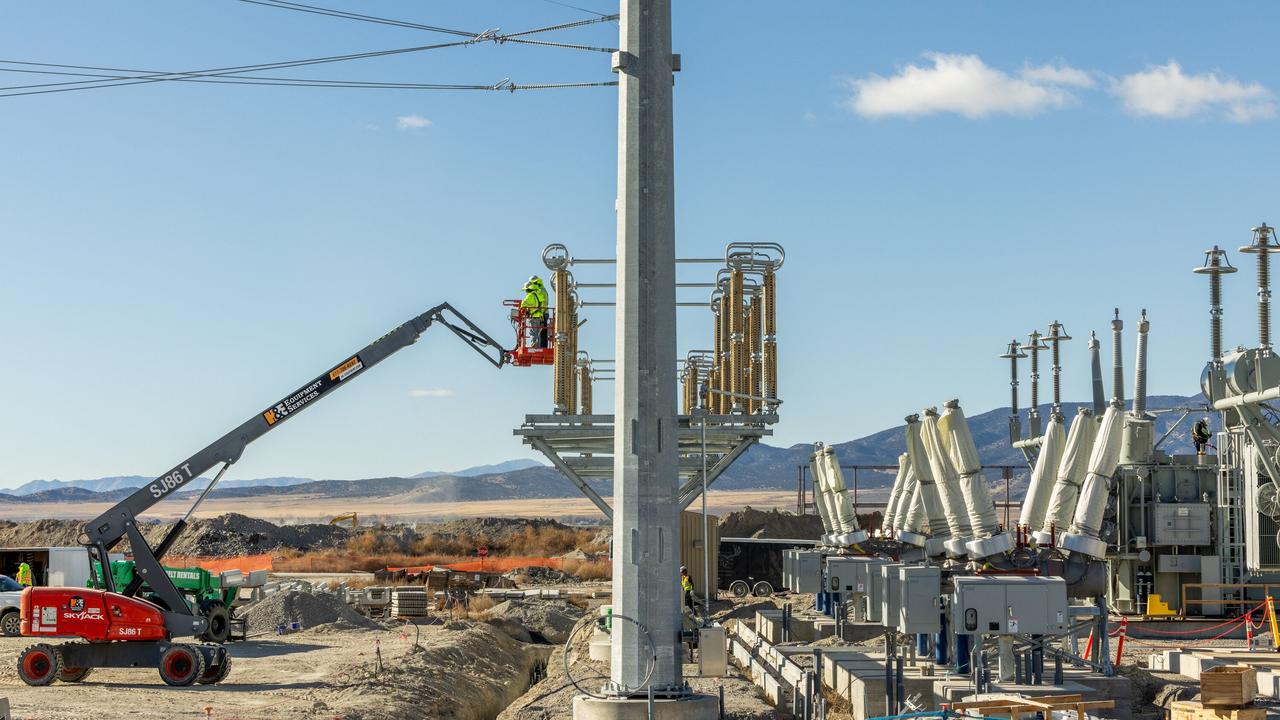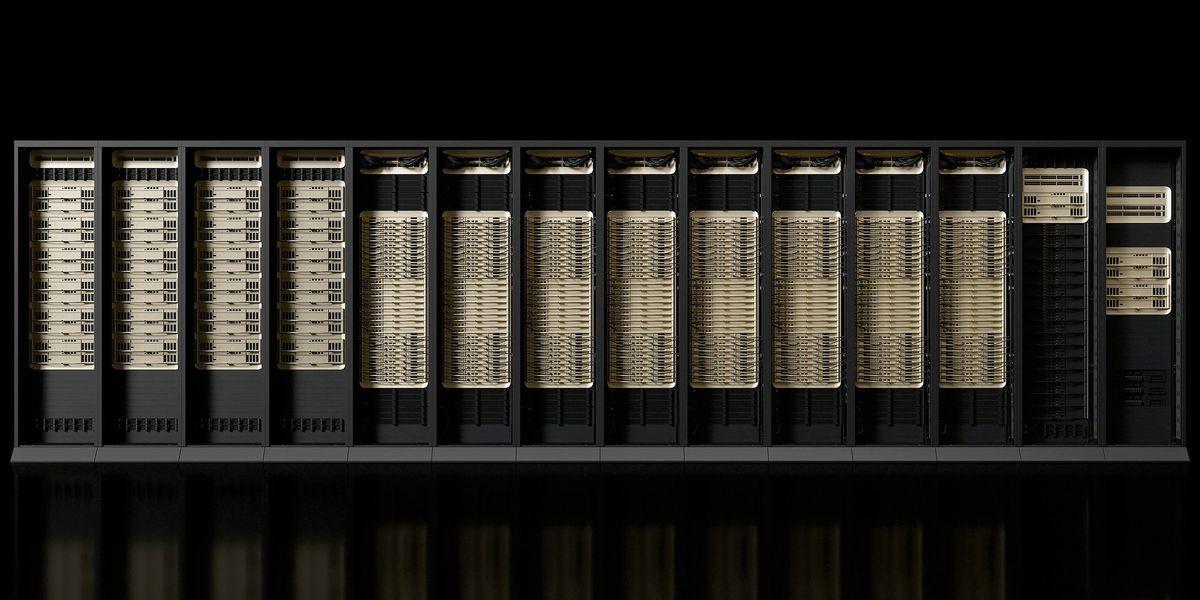AI Adoption Accelerates: From Consumer Chatbots to Superintelligence Research
2 Sources
2 Sources
[1]
The AI gold rush is here, but adoption data shows that its just getting started
The adoption of artificial intelligence tools is increasing at a rapid pace but remains far from ubiquity, providing more fuel for the AI trade to keep rallying. A string of recent data shows that businesses and consumers in the U.S. are increasingly using generative AI to help complete more tasks and address inquiries more quickly and efficiently. That bodes well for investors who own stocks across the AI trade -- ranging from chipmakers to data center suppliers to companies that help electricity get made -- because it suggests the hype on Wall Street is backed up by real-world embrace of the technology, with a lot more room to go. The AI trade has reemerged as a clear winner 2025 after a rocky start to the year, with tech stocks and related players in the midst of a strong rebound off their tariff-driven April lows. The momentum sent the tech-heavy Nasdaq rebound to fresh all-time highs. The first data point showing AI adoption is on the rise comes from a perhaps surprising source: the U.S. Census Bureau. The agency, which surveys 1.2 million firms as part of its Business Trends and Outlook Survey, found that the percentage of companies actively using AI tools -- such as machine learning, virtual agents, or voice recognition -- climbed 9.2% in the second quarter, up from 7.4% in the first quarter and 5.7% in the final three months of 2024. That figure is also about 2.5 times larger than the 3.7% recorded when the Census Bureau began tracking this data in September 2023. When analysts at UBS looked at that data, they concluded that at the current pace, AI adoption among the respondents will cross 10% by the end of the year. "This means AI adoption is likely to soon cross the 10% threshold that took US e-commerce 24 years to reach," analysts wrote in a June note to clients. "Without taking any single-name views, we believe a peak in overall AI adoption is still a long way off, and accelerating AI use is set to drive further monetization across industries," they also wrote. Adoption rates vary across companies based on their size. Firms with at least 250 employees reported a higher rate of adoption than smaller organizations in the Census Bureau survey, Goldman Sachs pointed out. Companies in the 100-to-249 employee range were at about 10%, though they had the highest rate of expected adoption over the next six months. To be sure, it's not a huge shock that larger companies are ahead of the pack here because they likely have the financial resources to test out AI tools without knowing for sure whether the return on investment will be there. But as the cost of AI computing comes down -- as many in the tech industry expect to happen -- usage is likely to "explode," in the words of IBM CEO Arvind Krishna. That benefit would extend to smaller firms. Companies that have used generative AI tools have liked what they've seen, according to a May report from the consultancy Bain & Co . Of the roughly 200 companies in its sample, more than 80% of their generative AI use cases met or exceeded expectations. On the consumer front, adoption is even more apparent. The share of Americans who have used OpenAI's ChatGPT has roughly doubled since summer 2023, according to a Pew Research Center survey published last week. Now, about a third of U.S. adults say they have used ChatGPT, Pew's survey found. Just as adoption rates vary based on the size of companies, the Pew data varies across age groups. Most notably, 58% of adults under age 30 say they've used ChatGPT, up from 43% last year and 33% in 2023. The launch of ChatGPT kicked off the current AI boom in late 2022, and racked up more than 100 million monthly users within two months of its launch. While Pew's data points to healthy growth in adoption, it also shows that there's still plenty of runway ahead with young adults. Not only are more people using the chatbot, OpenAI is seeing its revenue grow, too. The startup said in early June that it hit $10 billion in annual recurring revenue (ARR) -- compared with $5.5 billion in all of last year. The ARR figure includes ChatGPT products for consumers and businesses, as well as its application programming interface, or API, which developers can use to integrate OpenAI's technology into their own applications, CNBC previously reported. It does not include licensing revenue from close partner and investor Microsoft . With this swift growth, OpenAI is targeting $125 billion in revenue by 2029, The Information has reported . Growing use of OpenAI's products help explain one of the most impressive data points that Microsoft shared on its most recent earnings report: The company said its cloud unit Azure processed over 100 trillion tokens in the three months ended March 30, up fivefold from the year-ago period, with a record 50 trillion tokens happening in the month of March alone. A token is the smallest unit of data processed by an AI model -- fellow Club name Nvidia describes them as the "language and currency of AI." For Microsoft, processing over 100 trillion tokens in three months underscores the acceleration of AI adoption as enterprises and developers increasingly rely on Microsoft's AI platforms to write code, build AI agents, and more. When Microsoft reports its April-to-June earnings report in a few weeks, we'll be closely listening for an update on how many tokens were processed in the quarter. Oracle 's June earnings report offered additional evidence of the demand for AI computing, and then on Monday, its stock got another lift after a securities filing disclosed a cloud deal that would generate $30 billion in annual revenue starting in its fiscal 2028 (the company is in its fiscal 2026 first quarter). At least part of that contract is tied to OpenAI and the larger Stargate initiative, in which Oracle is a partner, Bloomberg News reported Wednesday . Putting all these data points together helps contextualize why Wall Street remains energized by the AI trade going on almost three years after the launch of ChatGPT. While investors need to pay close attention to what their AI-related companies are directly saying, doing, and reporting, considering other data can help add to their understanding. It's all part of the "homework" process that Jim Cramer has long preached. The Club is betting on further AI adoption in a variety of ways. It all starts with Nvidia , which has driven the generative AI revolution with its state-of-the-art chips and currently sits as the world's most valuable company at nearly $4 trillion market cap. Nvidia's most formidable competitor, Broadcom, also has a spot in our portfolio because its custom chip design services are coveted by tech giants such as Alphabet's Google and fellow Club name Meta Platforms . For its part, Meta is among the leading companies for AI monetization, leaning on the technology to improve ad targeting and engagement on its social media apps. That has helped fuel Meta's remarkable share-price recovery since the dark days of 2022. Meanwhile, industrial companies Eaton and, to a lesser extent, Dover sell products that are used inside the data centers where the most energy-intensive AI computing occurs. GE Vernova , our newest stock, makes the gas and wind turbines that generate electricity to feed the data centers -- and all signs point to needing more electricity generation as AI adoption grows. (Jim Cramer's Charitable Trust is long NVDA, AVGO, PANW, CRWD, DOV, ETN, GEV, META. See here for a full list of the stocks.) As a subscriber to the CNBC Investing Club with Jim Cramer, you will receive a trade alert before Jim makes a trade. Jim waits 45 minutes after sending a trade alert before buying or selling a stock in his charitable trust's portfolio. If Jim has talked about a stock on CNBC TV, he waits 72 hours after issuing the trade alert before executing the trade. THE ABOVE INVESTING CLUB INFORMATION IS SUBJECT TO OUR TERMS AND CONDITIONS AND PRIVACY POLICY , TOGETHER WITH OUR DISCLAIMER . NO FIDUCIARY OBLIGATION OR DUTY EXISTS, OR IS CREATED, BY VIRTUE OF YOUR RECEIPT OF ANY INFORMATION PROVIDED IN CONNECTION WITH THE INVESTING CLUB. NO SPECIFIC OUTCOME OR PROFIT IS GUARANTEED.
[2]
The Hidden AGI: Why the Real AI Revolution May Already Be Here -- and How to Invest Before It Breaks Cover | The Motley Fool
Charlie Munger, Warren Buffett's longtime partner, possessed a remarkable knack for understanding the world. Among his many pieces of wisdom, the concept of "inversion" always stood out as particularly potent. Inversion encourages us to solve problems by thinking backward: Instead of figuring out how to achieve a desired outcome, we consider what actions would guarantee failure. This simple yet profound mental model often reveals hidden pitfalls or, conversely, extraordinary opportunities. I apply this principle rigorously in my investment research. Sometimes it's a purely academic exercise, a way to play devil's advocate. Other times, it uncovers critical hidden dangers or previously unseen possibilities. Applying this same logic to the field of AI development led me to a profound insight that I'm increasingly convinced is correct: We are not scaling up to artificial general intelligence (AGI), but rather scaling down. The consumer versions of ChatGPT, Claude, and other large language models are, in essence, distillations of far greater capabilities that already exist. This isn't just a speculative thought; three compelling lines of evidence support this case, radically altering the risk-to-reward curve for AI investors. The military has a long and undeniable history of developing groundbreaking new technologies behind the scenes, only to introduce them to the public years or even decades later via commercial companies. Consider the internet, GPS, or even basic computing -- all had their origins in military or government research before becoming widespread consumer technologies. Why would AI development proceed any differently? If history is our guide, it likely followed the same pattern: classified breakthroughs first, public release years later. If this historical pattern holds, the publicly available versions of ChatGPT and its peers are likely scaled-down versions of AGI that already exist in classified settings. Given how incredibly capable these public models are, and assuming a typical five-to-10-year military-to-civilian technology transfer lag, AGI could already be operational in government or military facilities. The logic is straightforward: If what we're seeing publicly represents technology that's five to 10 years behind classified capabilities, then the private sector has already achieved AGI in some form. And here's where it gets truly explosive. Once AGI is achieved, most experts believe the leap to artificial superintelligence (ASI) happens rapidly. Why? AGI can improve its own code, design better algorithms, and create more efficient hardware architectures. This recursive self-improvement creates an intelligence explosion -- each generation of AI making the next one smarter, faster, more capable. Yes, I realize claiming ASI might already exist sounds audacious. But if classified programs achieved AGI years ago, they've had time for this intelligence explosion to occur. The same scaling laws that guide $1 trillion in infrastructure investments tell us that getting to AGI is the hard part. Once you're there, the path to ASI becomes a cascade of compounding improvements that could unfold in months, not decades. The most telling evidence comes from the mouths of tech leaders themselves. The narrative from Silicon Valley's pioneers isn't about if AGI will arrive, but when -- and increasingly, what comes after it. When asked what he's excited about in 2025, OpenAI CEO Sam Altman immediately responded: "AGI." He added, "I think we are going to get there faster than people expect" and "We actually know what to do... it'll take a while, it'll be hard, but that's tremendously exciting." In an AMA on Reddit late last year, Altman claimed AGI is achievable with current hardware, calling it "basically an engineering problem" at this point. These aren't the words of someone grappling with fundamental scientific breakthroughs; they sound like a project manager discussing a complex but solvable challenge. But here's where it gets really interesting: Meta Platforms (META -0.69%) has already moved past talking about AGI entirely. In June 2025, Mark Zuckerberg created "Meta Superintelligence Labs," writing in an internal memo: "As the pace of AI progress accelerates, developing superintelligence is coming into sight. I believe this will be the beginning of a new era for humanity, and I am fully committed to doing what it takes for Meta to lead the way." While the public debates whether AGI is five or 10 years away, Meta has restructured its entire AI organization around superintelligence -- the level beyond AGI. Zuckerberg is so committed that he's personally recruiting talent and has rearranged Meta's offices so the team sits near him. The company has embarked on an aggressive recruitment drive, with reports of exceptionally lucrative offers. While OpenAI CEO Sam Altman publicly claimed Meta was offering "$100 million signing bonuses" to poach talent, Meta's CTO Andrew Bosworth and some of the researchers involved have since publicly refuted that specific figure as an exaggeration, clarifying that compensation packages, while substantial, are structured differently and for a very select few. Regardless of the exact figures, this isn't just R&D; it's a full-scale, high-stakes race for a future that many still consider science fiction, with Meta's moves signaling an urgent pursuit of superintelligence. The financial markets are not merely reacting to hype; they are pricing in something extraordinary. Palantir Technologies, a company known for its deep ties to government and its data analytics and intelligence platforms, trades at a staggering 245 times forward earnings. Nvidia, the semiconductor powerhouse underpinning much of the AI revolution, trades at 52 times earnings, with Wall Street analysts continually raising their consensus price targets. These aren't the valuations of companies in a nascent, unproven field; they reflect an expectation of unprecedented growth and disruptive power. Perhaps the biggest tell, however, is what's happening in quantum computing. Quantum computing stocks -- at least the pure-play companies like IonQ (IONQ 0.92%), Rigetti Computing, and D-Wave Quantum -- have gone parabolic this year, despite their platforms still being in early stages of commercialization. IonQ alone has surged 474% in the past 12 months. Why is this a tell? Most experts believe that advanced forms of AI will act as a significant accelerator in the quantum computing space, meaning meaningful breakthroughs in this technology aren't decades away, but perhaps just years. Want more proof? IonQ trades at over 230 times trailing sales. This is either pure speculative mania or a deep insight into the imminence of groundbreaking advancements. The market seems to be betting on a near-term convergence of these two transformative technologies. A staggering $1 trillion in capital is already committed to the AI superbuild through 2030. This commitment isn't coming from wild speculation; it's coming from some of the most sophisticated capital allocators in the world. McKinsey estimates that scaling AI data centers will require $6.7 trillion globally by 2030. The recently announced Stargate Initiative alone represents a reported $500 billion in private sector investment. My guess is that the risk is limited precisely because advanced AI systems have already been developed in classified settings. Now, we're in a phase of preparing humanity for a profound discontinuity. The infrastructure being built today isn't for developing AGI -- it's for deploying scaled versions of what already exists. Yes, the old system is being phased out, and a new, AI-centric society is rapidly coming into view. Realizing that the AI revolution is likely even further along than publicly acknowledged means the "scaling down" hypothesis has been significantly de-risked. So, how should investors ride this wave? Focus on the core infrastructure and applications. Data center REITs like Equinix are crucial as the physical backbone of this new era. Core AI infrastructure players, such as Nvidia for chips and Meta Platforms for foundational models and research, are central. Application developers like SoundHound AI, which are leveraging these advanced models, also present opportunities. Crucially, the immense and continuous power demands of AI data centers are creating a massive surge in demand for reliable, carbon-free energy. This is where nuclear energy emerges as a critical, long-term play. Unlike intermittent renewables, nuclear power provides baseload, 24/7 clean electricity, which is precisely what always-on AI operations require. Tech giants like Microsoft, Alphabet, and Amazon are already signing multiyear power purchase agreements and investing directly in nuclear power solutions, including both established plants and new small modular reactors (SMRs). Key nuclear energy plays include established operators like Constellation Energy, the largest nuclear power plant operator in the U.S., which is already signing deals directly with hyperscalers. Uranium miners like Cameco are well-positioned as nuclear demand grows. More speculative plays include SMR developers like NuScale Power and Oklo, which could deploy smaller reactors closer to data centers. Another key emerging trend to understand is that this intelligence explosion will soon spill over into other sectors such as healthcare (through AI-fueled drug discovery), energy (beyond just power generation), and transportation (autonomous vehicles). What's the easiest way to play this trend? The Vanguard Information Technology Index Fund (VGT -0.38%) offers broad exposure with an ultra-low expense ratio. With automatic rebalancing, you don't have to pick certain stocks or themes. You can play the entire AI value chain as it evolves in real time. Safety remains a significant concern, especially with people like Geoffrey Hinton expressing public reservations. However, the idea increasingly taking hold on Wall Street, and one that has long been held in Silicon Valley, is that the public is underhyped about the true progress of AI. The inversion principle suggests we're not just waiting for AGI to arrive; it might already be here, and what we're witnessing publicly is just the tip of the iceberg, carefully scaled down for introduction to the world. If this thesis is even partially correct, we're not preparing for a technological revolution -- we're already in the middle of one. Are you prepared for what comes next?
Share
Share
Copy Link
AI adoption is rapidly increasing across businesses and consumers, with tech giants already looking beyond AGI to superintelligence, suggesting the AI revolution may be further along than publicly known.
AI Adoption Trends Show Rapid Growth
Recent data indicates a significant surge in AI adoption across various sectors. The U.S. Census Bureau's Business Trends and Outlook Survey reveals that the percentage of companies actively using AI tools has climbed to 9.3% in the second quarter of 2025, up from 5.8% in late 2024
1
.
Source: CNBC
Larger companies are leading the charge, with firms employing 250+ workers reporting higher adoption rates. However, companies with 100-249 employees show the highest expected adoption over the next six months, indicating that AI's reach is expanding
1
.Consumer Adoption and Revenue Growth
On the consumer front, adoption is even more pronounced. A Pew Research Center survey found that about a third of U.S. adults have used ChatGPT, roughly doubling since summer 2023
1
. The adoption rate is particularly high among younger adults, with 58% of those under 30 reporting ChatGPT usage.This increased adoption is translating into significant revenue growth for AI companies. OpenAI reported hitting $10 billion in annual recurring revenue, a substantial increase from $5.8 billion in the previous year
1
. The company is now targeting an ambitious $125 billion in revenue by 2029.Tech Giants' AI Initiatives
Major tech companies are making significant strides in AI development. Microsoft's cloud unit Azure processed over 100 trillion tokens in the first quarter of 2025, a fivefold increase year-over-year
1
. This surge in token processing underscores the acceleration of AI adoption in enterprise settings.Meta Platforms has taken a bold step by creating "Meta Superintelligence Labs," signaling a shift beyond AGI (Artificial General Intelligence) to focus on superintelligence
2
. This move, accompanied by aggressive talent recruitment, suggests that AI development may be progressing faster than publicly acknowledged.The Hidden AGI Hypothesis
Some industry observers speculate that AGI might already exist in classified settings, with public AI models being scaled-down versions of more advanced capabilities
2
. This theory is supported by historical patterns of military-to-civilian technology transfer and statements from tech leaders suggesting that AGI is an engineering problem rather than a fundamental scientific challenge.Related Stories
Financial Markets and AI Potential
The financial markets appear to be pricing in extraordinary potential for AI companies. Palantir Technologies, known for its government ties and intelligence platforms, is trading at 245 times forward earnings, reflecting high investor expectations for AI's future impact
2
.Challenges and Considerations
Despite the rapid progress, AI adoption faces challenges. Smaller businesses may struggle with implementation due to resource constraints. Additionally, as AI capabilities grow, questions about regulation, ethics, and societal impact become increasingly pressing.
The potential existence of more advanced AI in classified settings also raises concerns about transparency and the global AI race. As companies like Meta pivot towards superintelligence research, the need for international cooperation and oversight becomes more critical.
In conclusion, the AI landscape is evolving at an unprecedented pace, with adoption rates soaring and tech giants pushing the boundaries of what's possible. As we stand on the cusp of potentially transformative AI breakthroughs, the coming years promise to be a pivotal period in technological history.
References
Summarized by
Navi
Related Stories
DeepSeek's AI Innovation Sparks $2 Trillion Market Correction and Reevaluation of AI Industry
08 Feb 2025•Business and Economy

Nvidia's Record Earnings Highlight AI Boom and Future Challenges
27 Aug 2025•Business and Economy

The AI Revolution: Mega-Cap Tech Companies Lead the Charge in AI Investments and Revenue Growth
17 Aug 2024

Recent Highlights
1
X's Paywall Doesn't Stop Grok From Generating Nonconsensual Deepfakes and Explicit Images
Policy and Regulation

2
Nvidia Vera Rubin architecture slashes AI costs by 10x with advanced networking at its core
Technology

3
OpenAI launches ChatGPT Health to connect medical records to AI amid accuracy concerns
Technology





